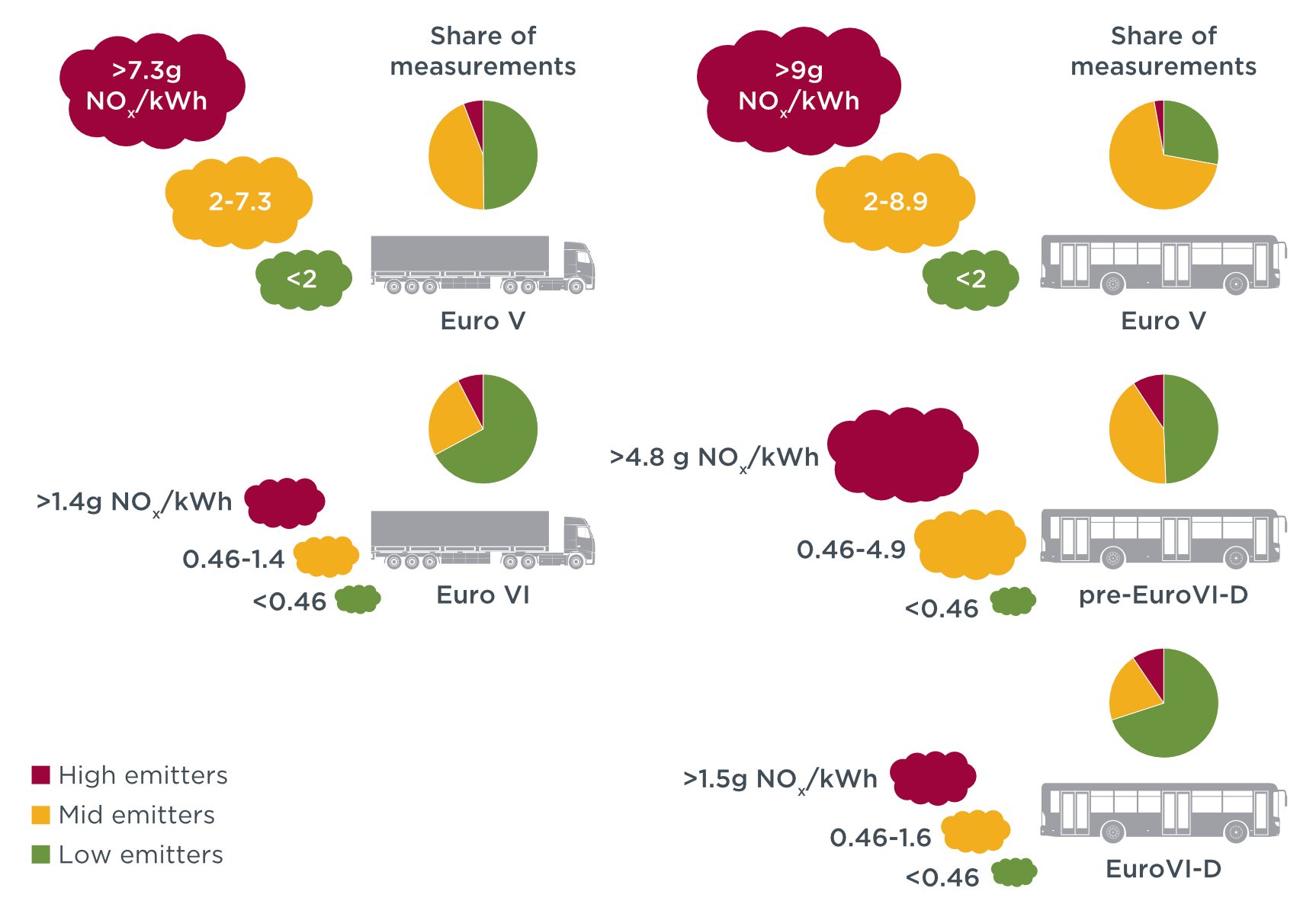Working Paper
Remote sensing of heavy-duty vehicle emissions in Europe
This study presents a multi-regional remote sensing analysis of 33,600 European trucks and buses to quantify the real-world level of pollutant emissions across different vehicle emission standards. It draws on data recorded from six remote sensing campaigns in Europe conducted between 2017 and 2020, covering a range of ambient temperatures and vehicle driving conditions.
A clear reduction in the average NOx emissions of trucks and buses was observed over the increasing level of stringency of the Euro emission standards. The introduction of the Euro VI-D stage for new vehicles reduced the NOx emissions of buses three-fold in comparison with other Euro VI buses predating this standard.
Despite falling average emission levels, the real-world NOx emissions of heavy-duty vehicles are still generally in exceedance of the regulatory limits, particularly in urban areas. This analysis found 7.6% of trucks and 9.5% of buses compliant with Euro VI to be high emitters compared to 5.8% and 2.8% of Euro V compliant trucks and buses. These high emitters may result from unfavorable testing conditions, emission control failure, or vehicle tampering.
Combining remote sensing techniques as performed in this analysis in tandem with road-side inspections presents a viable option for local authorities to investigate the cause of high emissions from suspect individual vehicles.

Figure 22. Summary of NOx emissions from trucks and buses across all remote sensing campaigns. Low emitters are defined by vehicles with emissions recorded at a level below the limits imposed by the respective Euro standards. High emitters are defined as the 3rd quartile plus 1.5 times the interquartile range of measurements, and mid-emitters fall between the two.
